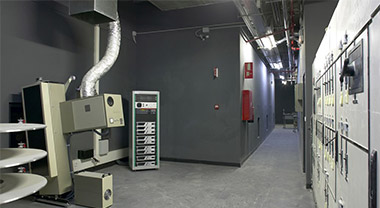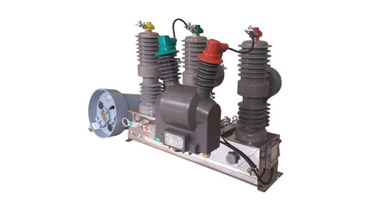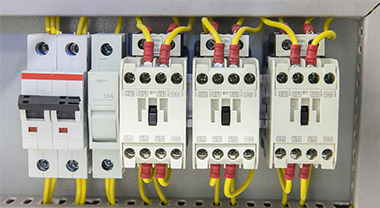Selection of low-voltage circuit breakers and common fault handling methods
The selection of low-voltage circuit breakers should pay attention to the following points.
- The rated current and rated voltage of the low-voltage circuit breaker should be greater than or equal to the normal working voltage and working current of the line and equipment.
- The limit making and breaking capacity of the low-voltage circuit breaker should be greater than or equal to the maximum short-circuit current of the circuit.
- The rated voltage of the undervoltage release is equal to the rated voltage of the line.
- The rated current of the overcurrent release is greater than or equal to the maximum load current of the line.
Using a low-voltage circuit breaker to achieve short-circuit protection is better than a fuse, because when a three-phase circuit is short-circuited, it is very likely that only one phase of the fuse will blow, resulting in phase-open operation. For low-voltage circuit breakers, as long as a short circuit is caused, the switch will trip, and the three will be cut off simultaneously. There are other automatic protection functions. But its complex structure, low operating frequency and high price make it suitable for demanding occasions, such as power distribution boards.
Common faults of low-voltage circuit breakers and their treatment methods are shown in the table.
|
Symptom |
Cause |
repairing method according to |
|
manually broken path is not closed |
1. Low power supply voltage 2. Thermal trip bimetal Not cold was restored 3. Undervoltage release or no voltage line ring damage 4. Storage spring deformation, resulting in the closure force is reduced 5. Counteracting the spring force is too large |
1. Check the line and increase the power supply voltage 2. To be cooled before closing bimetal 3. Check the line, or replace the applied voltage a coil 4. Exchange-spring 5. Re-adjust the spring reaction force |
|
electrically operated broken path is not closed |
1. Does not match the power supply voltage 2. Power capacity is not enough 3. Solenoid enough stroke rod 4. Displacement motor-operated position switch |
1. Power exchange 2. The operation of increasing the capacity of the power supply 3. Replacement or adjustment rods 4. Adjusting positioning switch |
|
Motor start breaker immediatelybreaking when
|
1. Overcurrent release instantaneous setting value too 2. A release walled parts damage 3. The reaction force spring release or rupture down |
1. Whole adjustment instantaneous value 2. Release or exchange damaged zero means 3. Spring replacement or re-installed spring |
|
Shunt trip does not cause the circuit breaker breaking |
1. Shorted coil 2. Low power supply voltage |
1. Exchange coil 2. Repair lines adjusted power supply voltage |
|
undervoltage tripping Noise Big |
1. Counteracting the spring force is too 2. The working oil while the core 3. Short ring broken |
1. Adjust reaction spring 2. Clear oil core 3. Exchange core |
|
undervoltage tripping can not make the interruption breaking device |
1. The reaction force becomes smaller spring force 2. The spring force accumulator spring break or is small 3. Rust stuck mechanism |
1. Adjusting spring 2. Or adjust the exchange-spring 3. Clear rust sewage |




